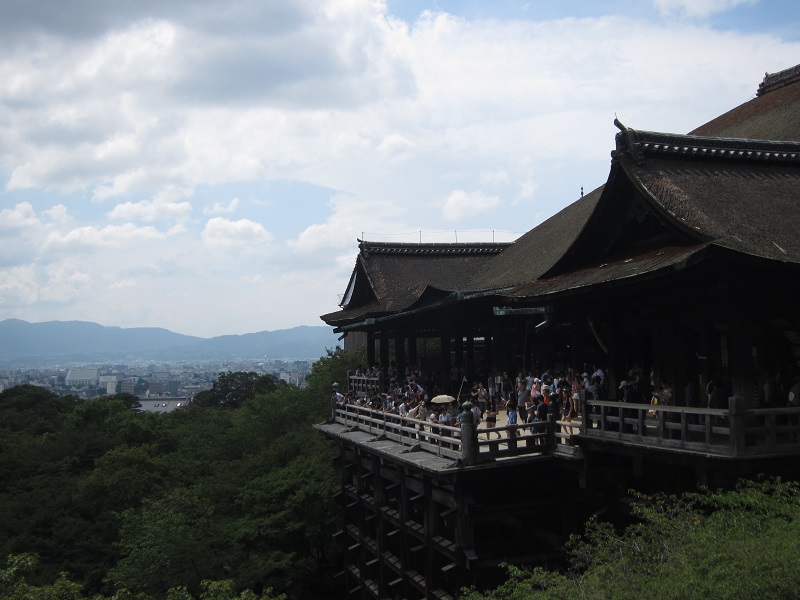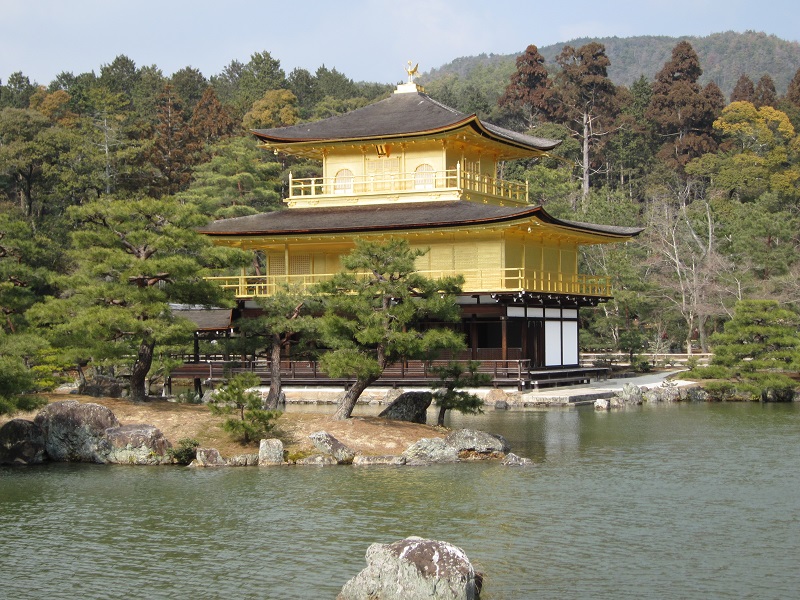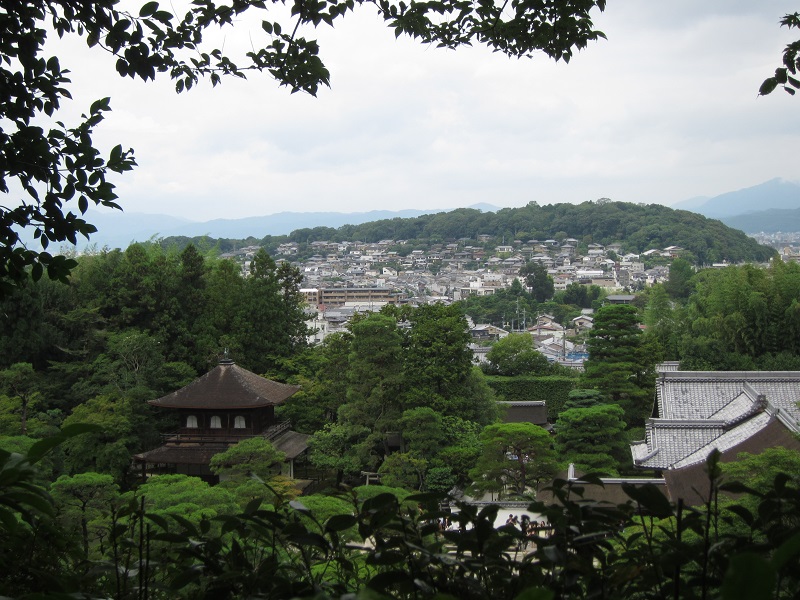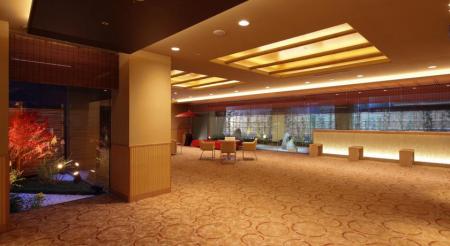Kyoto, Japan Feb. 22 Sat 5:55PM
A Brief Overview
The image of temples probably comes to mind for many people when they consider visiting Kyoto. That image is accurate since there are more than 1,500 temples in Kyoto city. A temple can be defined as a place which houses a Buddha statue and conducts Buddhist ceremonies and training. And a temple usually has a graveyard attached to it. In other words, a temple is a sacred place. Because of this concept, most temples don’t function as sightseeing destinations. However, there are some exceptions. Throughout Japan, temples that welcome visitors, including tourists, into their halls and gardens can be found. Sensoji Temple in Tokyo, Zenkoji Temple in Nagano, and Shitennoji Temple in Osaka are good examples. And there are a plenty of similar examples in Kyoto. Each temple has its own characteristics and history. And this type of temple usually requires a small entrance fee so that they can maintain their valuable assets and premises. Let’s go over some of the greatest temples, which also serve as sightseeing spots. The goal of providing the following information is to show how interesting and memorable temple-visiting can be in Kyoto. In an attempt not to overwhelm those who are interested in visiting Kyoto, brief overviews, rather than in depth information will be highlighted here.
Kiyomizu-dera

First of all, it is almost impossible to claim to have visited Kyoto without also visiting Kiyomizudera Temple. Kiyomizudera Temple is the landmark of Kyoto city. Especially the stage, which extends from the main hall, is so famous that virtually every postcard set sold includes a snapshot of it.
Kinkakuji

Next, Kinkakuji Temple (the official name is Rokuonji Temple), also known as the Golden Pavilion, shouldn’t be missed either. This temple used to be a villa of the great Shogun, Yoshimitsu Ashikaga, who was a talented leader and developed a unique culture which sprang from this place. After he died, the villa was turned into a temple that now welcomes people from all over the world.
Ginkakuji

Ginkakuji Temple, which was also established by a Shogun from the Ashikaga family, is not covered by silver plate, although “Gin” in Japanese means silver. However, this does not decrease the value of this historical temple. The garden, which takes advantage of its beautiful surrounding landscape, is well taken care of and worth viewing.
Nanzenji Temple boasts a unique atmosphere. From the solemnly standing Sanmon Gate a view of the historical city of Kyoto, can be enjoyed. And the rustic aqueduct, which looks like the ones in ancient Rome, fits the magical atmosphere of this temple.
Ryoanji Temple’s Stone Garden has a mysterious layout, by which it is impossible to see all of the 15 stones in a single glance. At least one of them will be hidden from sight at every angle. Since Ryoanji Temple is close to Kinkakuji Temple, it is advised to visit them as a set.
Toji Temple is also regarded as a landmark of Kyoto. The five story pagoda (55 meters / 180 feet high) is the highest wooden construct in Japan. Toji is designated as a World Heritage Site.
In the Arashiyama area, which is blessed with a plenty of picturesque scenery, Tenryuji Temple should be the center of one’s sightseeing. This garden, which has Arashiyama Mountain as the context, makes for a relaxing and pleasing atmosphere. Just like Kinkakuji Temple and Ginkakuji Temple, Tenryuji Temple was envisioned by a Shogun from Ashikaga family called Takauji Ashikaga.
Sanjyu Sangendo, formally known as Renge Oin Temple, has an astonishing number of Buddha statues. The spectacle of one thousand Buddha statues in a single hall (120 meter/393 feet long) is something that can be seen only at this temple.
Chion-in Temple has the largest Sanmon Gate in Japan and an enormous bell, which requires 17 people in total, working together, to be rung on New Year’s Eve.
Kenninji Temple is the oldest Zen temple in Japan. The dragon painting on the ceiling of the Hatto hall is impressive and seems to exude vigor. Experience the Zen atmosphere and enjoy taking a walk in the Gion area before or after visiting this temple.
Tofukuji Temple is one of the best spots to see the autumn leaves. This prestigious temple, which completed its construction in 1255, has a wooden bridge called Tsutenkyo from which vivid, bright red maple leaves can be viewed.
All of the above temples welcome tourists from all over the world, and there are many more. As mentioned, although they are all categorized as temples, each has its own characteristics and highlights, which is why temple-hopping is thought of as the top activity in Kyoto.


